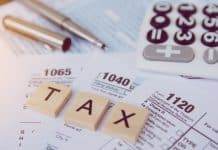
Introduction
Many people are not aware that you can use an Individual Development Account (IDA) to improve your life. This can take place as going back to school, tripling your savings on a down payment on a home loan, or even starting your own business! You may be one of those “many people” who did not know about this hidden gem, formally known as the Individual Development Account. The Individual Development Account is a blessing; it will help you achieve financial stability and long-term self-sufficiency. (No need to plan your bank heist anymore, the IDA will allow you to achieve financial stability the right way.) Long-term self-sufficiency is not a dream that you thought you could never reach; you can get there with an Individual Development Account and your last two brain cells. (Does anyone have more than two working brain cells these days?)
In order to start thinking about the future as anything other than a dark, dingy hole that you are avoiding, you will need to understand what an Individual Development Account is, if you are eligible to partake in an IDA, and how you can apply to join the party.
What is an Individual Development Account?
According to Investopedia, an Individual Development Account (IDA) is a “type of savings account made to help low-income individuals build assets and achieve financial stability and long-term self-sufficiency.” You can use an Individual Development Account to jump-start your business, pay for school, or even purchase a home. (Think of it as a second chance to your first lifetime.) (Kagan)
Individual Development Accounts offer financial stability in many different ways. The Assets for Independence Program, an initiative of the Office of Community Services of the U.S. Department of Health and Human Services, created the Individual Development Account grant program. However, they do not just pass IDAs around, like candy. In order to qualify and receive your own Individual Development Account, a financial literacy training program needs to be completed. The training program educates you on subject matters, such as: money management, investing, and debt reduction. (Don’t worry, it’s free and it’s pretty necessary for anyone who will be responsible for their finances. We should all take it.)
An Individual Development Account will add to your savings, and take you a step further. As an example, your 401(k), the money you are saving in an Individual Development Account, is matched by private funds or public funds. (Either way, show me the money, right?)
This will increase the total value of your savings, while also allowing you to open an account with a credible financial institution. You can also make constant deposits over a set period of time. The deposits are matched to a ratio of 2:1 or 1:1. (The ratio depends on your state and the implementation design of the Program, but it’s still more money anyway.)
How Does an IDA Work?
This account is dependent on community resources and government grants that provide the chance for low income individuals/families to improve their situation. Match programs offered by this account can add as much as four times what you put into your savings. That means for every $1 you put into your account, you could potentially get $4 more. (It sounds unbelievable, but facts are facts.) (Inner City Christian Federation)
The Individual Development Account savings period varies from one program to another. This means that there is no standard period of time that you can withdraw your savings. However, most savings periods are from one year to three years. The savings period defines the period of time where your savings will be matched. It is possible for you to withdraw money as soon as you have reached your savings goal. However, you will need to get approval from the program sponsor.
This leads to the next question that is probably on your mind; who did what?
What Organizations Sponsor the Individual Development Account (IDA) Program?
Resources or funds for Individual Development Accounts can come from different places. These sources can include: government agencies, private companies, local charities, and churches. Any individual, business, or organization can contribute funds to an Individual Development Account. Typically, donors can get a tax deduction for their contribution to Individual Development Accounts. This is a form of recognition for assisting others in their community. (A show of goodwill, as it may.)
Programs that involve partnerships between nonprofit organizations and formal financial entities generally provide Individual Development Accounts. The Individual Development Account program sponsor is the responsibility of the local non-profit organization. The program sponsor is responsible for several different services. This includes: recruiting participants, providing financial education training, and may offer one-on-one counseling to participants of the Program.
After you sign up for an Individual Development Account (IDA) program, each participant of the program will open an account with a partnered financial institution. The financial institution could be a bank or a credit union. The financial institution handles all monetary transactions to and from the Individual Development Account. (It’s just like any other savings account; you will not need a manual to know how it works.)
Every month, you, as a program participant, will receive a report that lets you know how much money is accumulating in your account. The money in your account refers to individual savings, matched funds, and interest.
Can Anyone Apply for an Individual Development Account?
In order to be eligible to join the IDA Program, the eligibility criteria varies from one program to another. However, as a general idea, most criteria require that your income is less than twice the amount of the federal poverty level. You will have to receive income from a job, and you need to attend financial literacy training programs. (The free financial classes, yes, that one.)
While this is a great option, it is not as simple as just applying. You will also need to take classes that help you better understand financial management, so you can improve on your credit. To determine how much you are able to add into your savings, you will find limits set in place. An IDA provides assistance to those who need it most, which is why there are limits to the account. If you are able to put a large amount of money into this account, then you don’t really need assistance as much as some other applicants.
There are other criteria, including: your citizenship or legal resident status, having credit or not, and meeting certain asset limits.
According to Disability Benefits 101 in California, “the general requirements to be eligible for an Individual Development Account are as follows:
- Your annual income must be 200% of the Federal Poverty Level with an exception where you may qualify if your income is 65-85% of the median income in your area.
- You will need to earn income from a job. As an exception, by the federal government, there are some IDAs that may have slightly different earned income requirements and allow for income from other sources.
- You must attend free financial literacy training. These classes usually cover topics such as money management, debt reduction, developing a savings plan, credit, and investing.
Some programs also have additional restrictions based on:
- Asset limits
- Your credit history
- Whether you are a citizen or legal resident. Ask about specific residency requirements when exploring IDA programs.” (Disability Benefit 101: California)
Will an Individual Development Account (IDA) Influence Your Supplemental Social Insurance (SSI)?
In case you are wondering (and you are really responsible), applying and receiving an Individual Development Account will not affect your SSI. You may also know it as your Supplemental Social Insurance. In fact, there is a possibility that it might even go up. This could happen, because the earnings you make, the matched funds, and the interest that is funded into your Individual Development Account does not count as your income or resources. (Yay, Supplemental Social Insurance Policy and its generosity!)
Conclusion
In conclusion, an Individual Development Account is a type of savings account that helps low-income families and individuals build assets and achieve financial security, as well as, long-term self-sufficiency. An Individual Development Account will assist you in jump-starting your business, paying for your education, or buying your home.
The general idea of an IDA is that it matches the savings that you have in your piggy bank, or your regular bank. Whatever the amount that you have in your savings, then the Individual Development Account matches that amount. The savings period varies from program to program, but you can usually withdraw the funds from one year to three years. If you reach your savings goal, then you can withdraw your funds. However, you will need to get approval from your program sponsor.
IDA’s operate differently depending on where you are located. The best place to begin looking is at resources within the community that provide rent or utility assistance!
Frequently Asked Questions
What If I Lose My Job While Enrolled In An Individual Development Account (IDA)?
If you lose your job while you are still participating in an Individual Development Account, the Program offers you a six month grace period that allows you to look for employment. As long as you manage to find a job in the six months offered to you, then you will likely be able to keep your Individual Development Account.
How Long Can I Keep My Individual Development Account (IDA) Open?
Most people keep their Individual Development Account Open from a range of one to three years. However, there are programs that allow you to keep your Individual Development Account open for five years.
For What Purposes Can I Use An Individual Development Account (IDA)?
For federally funded Individual Development Accounts, you can use your IDA for three different purposes. You can use it to start a business, pay for your higher education, and for buying your first home.
However, external sources fund certain Individual Development Accounts programs, allowing you to save funds for other purposes. In order to find out more, you will need to check with a specific Individual Development Account program.
What Is The Process For Participating In An Individual Development Account (IDA) Program?
There are six steps that you will need to follow to participate in an Individual Development Account Program, which are:
- Find out whether you want an Individual Development Account and what your aim would be, if you receive it.
- Locate an IDA program in your area, or state.
- Attend an orientation meeting to find out more details about the program and confirm your eligibility to participate in the program.
- Once accepted into the program, you will need to open a savings account at a partnered financial.
- Periodically deposit money into your savings account.
- Once you have reached your savings goal, you can start withdrawing money towards spending on your financial goal.
How Do I Stay Enrolled In An Individual Development Account (IDA) Program?
Each Individual Development Account program has a different range of requirements that depend on the program. However, on a general level, you need to attend an orientation meeting, complete financial literacy training, remain in constant contact with your caseworks, and complete your savings goal. If you manage to uphold all of these terms, then you can remain a participant.
Is There A Limit To How Much I Can Save In My Individual Development Account (IDA)?
Most Individual Development programs will only limit you to save a certain amount of funds in your savings account, which is usually approximately $4,000. These funds include the money you are depositing on a regular basis and the matched funds. Once you reach this limit, you can deposit more funds. However, you can only do so once the goal amount will be matched.
Works Cited
Disability Benefit 101: California. Frequently Asked Questions: Individual Development Accounts. 2021. 19 06 2021 <https://ca.db101.org/ca/programs/job_planning/ida/faqs.htm>.
Inner City Christian Federation. “Individual Development Account Application 2021.” 2021. Inner City Christian Federation. 19 06 2021 <https://iccf.org/wp-content/uploads/2021/03/IDA_Program_Description_2021.pdf>.
Kagan, Julia. Individual Development Account (IDA). 20 10 2020. 19 06 2021 <https://www.investopedia.com/terms/i/ida.asp>.


















